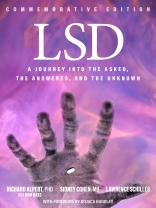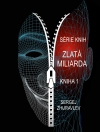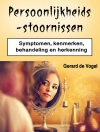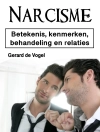Out of print for more than half a century, LSD: A Journey into the Asked, the Answered, and the Unknown, is now available in a commemorative edition, with candid commentary, a new introduction by counterculture journalist Jessica Hundley, and a photographic portrait of a generation.
In the midst of a raging national controversy around the indiscriminate use of LSD, two authorities – Richard Alpert, Ph D (AKA Ram Dass) and psychoanalyst Sidney Cohen, MD – spoke out on the dangers, merits, legal regulations and control of the revolutionary psychedelic drug. Their book was illustrated with a groundbreaking photo essay by journalist Lawrence Schiller , whose cover story for Life magazine introduced America to the sweeping new LSD epidemic and was a precursor to the federal criminalization of the drug.
As the first national photojournalist to capture the American acid scene from the inside, Schiller began with a single contact in Berkeley, California, and built a large network of young, receptive subjects who allowed him to document their private experiences with LSD. At first, his contacts were few and difficult. “Many of them were afraid, ” and said no. There were others, however, who were trying to exercise their rebellion, “and some…had a sort of missionary quality. They not only wanted to tell about their experiences; they seemed as though they had to.”
Schiller’s reporting expanded to include Timothy Leary , then on trial in Laredo, Texas, and the Merry Pranksters , who stopped by his studio for stroboscopic photos after the Hollywood Acid Test. The deeper he went into the story, the more questions he had. Questions like, “Is the LSD state reality or illusion?” and “Can you understand…without having had “the experience?” Figuring others did as well, he asked Alpert and Cohen to answer them for readers—from their two opposing points of view. The unexpected result is perhaps one of the most deeply informative documents on psychedelics ever published. It sold close to a million copies.
At a time when the use of consciousness-expanding substances is again making headlines, the moment that LSD burst out from the rarified world of Timothy Leary and Richard Alpert’s experiments at Harvard to acid parties on the Sunset Strip is worth a second look.
Spis treści
- Foreword by Jessica Hundley
- What are the psychedelic drugs?
- Is the lsd state reality or illusion?
- Can you understand this issue without having had “the experience?”
- Is the freedom to take lsd an inalienable right of man?
- Why do some people have horrible lsd experiences?
- Can one escape the games of life with lsd?
- Why has a link been suggested between the lsd experience and mysticism?
- What are the implications for religion if a chemical religious experience is a possibility?
- What is the relationship between the lsd experience and creativity?
- Who should have lsd?
- Who should give lsd?
- Who should control lsd?
- Why are the State and Federal prohibitive laws being enacted against the psychedelics?
- What is the relationship between marijuana and the psychedelics?
- Why do lsd users like to turn other people on?
- What is your estimate of the future of the psychedelics?
- Additional questions and Five photographic essays
O autorze
Jessica Hundley is a journalist, author, editor, filmmaker, and producer specializing in culture, counterculture, psychedelia, and the arts. She has edited books for Taschen, Rizzoli, Princeton Architectural Press, Chronicle, and more, serving as an author and series editor for Taschen’s Library of Esoterica. As an author, her many books include The New New Age: Crystals (Hat & Beard Press; Grievous Angel, an acclaimed bio on country rock icon Gram Parsons (Da Capo); and extensive overviews of the photography of Dennis Hopper (Taschen Publications), and Michael Jackson photographer Todd Gray (Chronicle).












